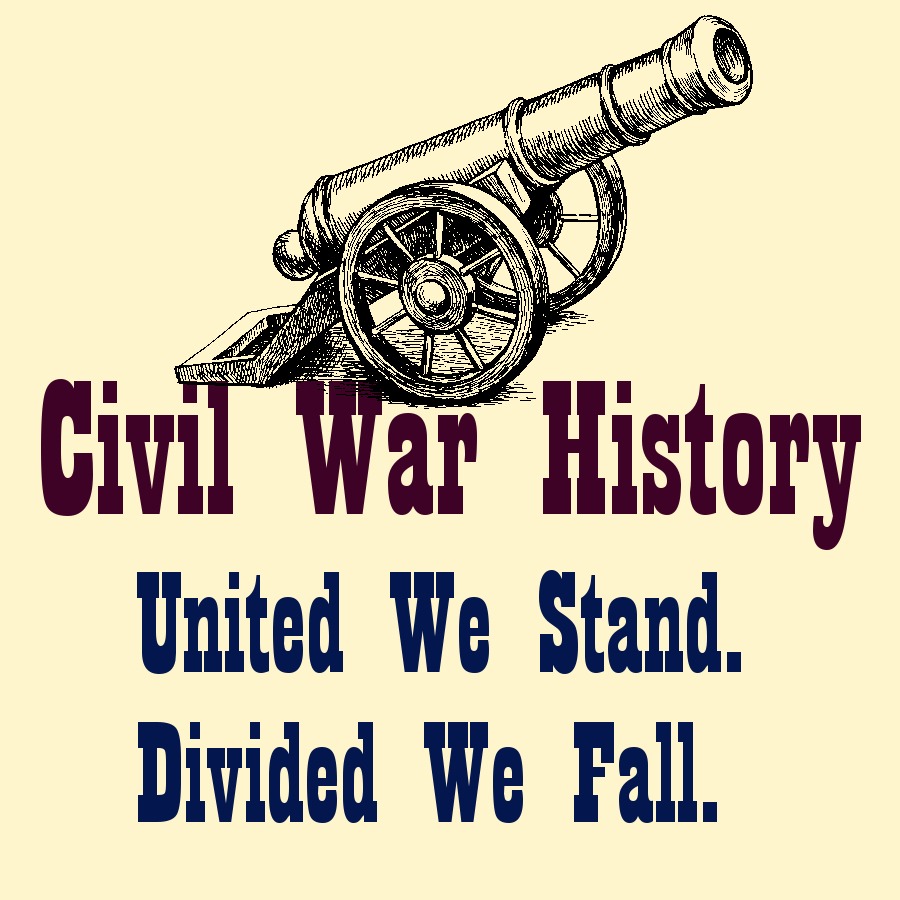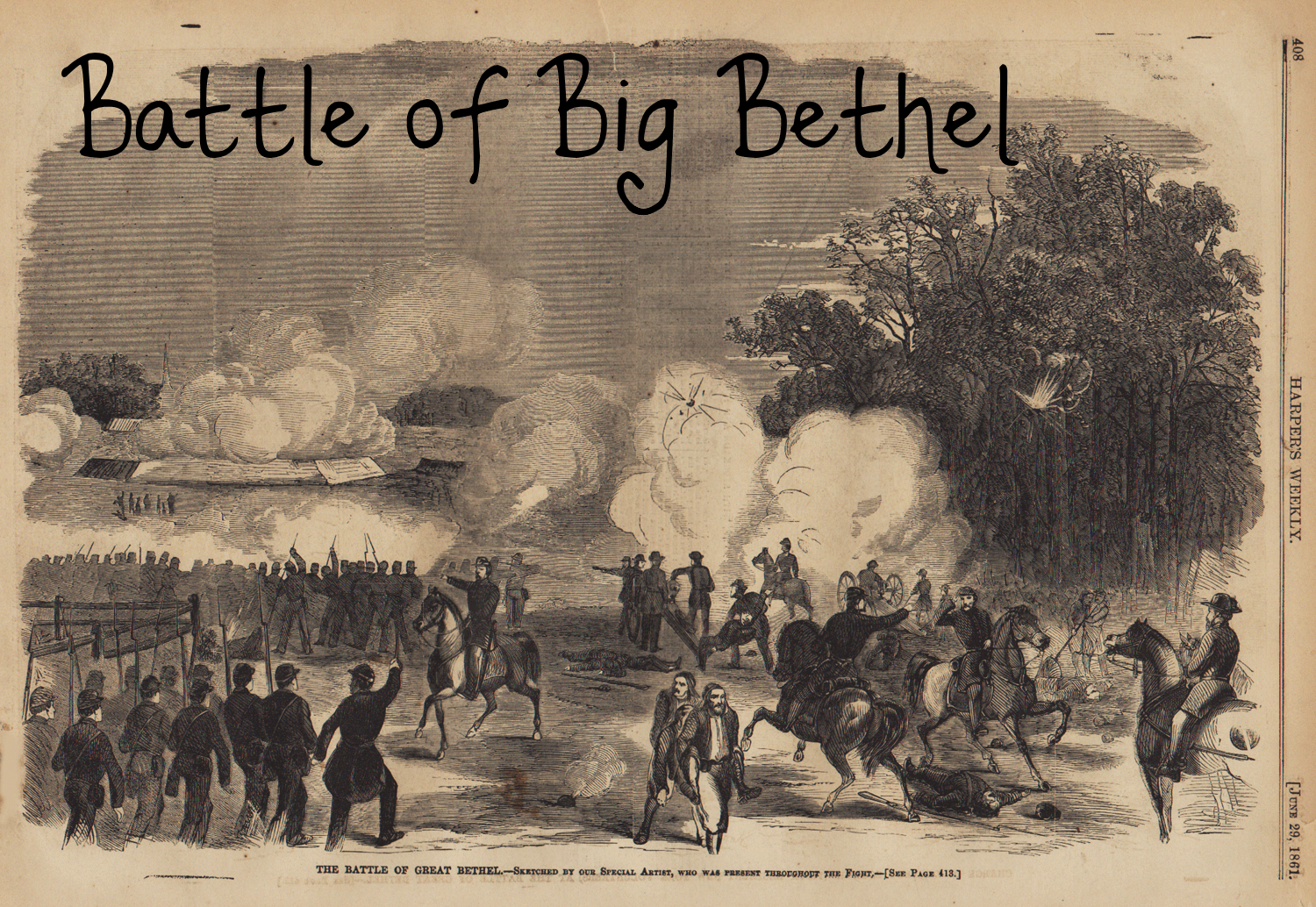
Battle of Big Bethel
The Battle of Big Bethel actually took place prior to the Battle of Rich Mountain. However, it was such a minor battle that not much is really said about it. Additionally, because of all the different divisions that participated, it can get sort of confusing. Hopefully not too much, though.
The Battle of Big Bethel took place on June 10, 1861 in the areas of Tabb and Hampton, Virginia. It occurred very early on in what would become four long years of bloodshed. But this early on, all it really did was send a very clear message: “That brave young men, lots of brave young men, were going to die in this war” (Source). At the same time, it showed exactly how the Union was going to deal with runaway slaves. And that’s an important point for all Americans to remember.
Essentially, they were scuttled across the lines into Northern territory where, in many cases, they were made part of the colored ranks.
It all began back in April, when President Lincoln called from an additional 75,000 men to put down the growing rebellion. We remember that Virginia refused to comply, deciding to secede instead. As a result, they found the need to defend Fort Monroe. By mid-April, however, the Union forces were building Camp Butler (named after Major General Benjamin F. Butler, who was, at the time of the war, a Republican, though other sources refuse to admit to this). Major General Robert E. Lee, was growing worried over Butler’s activities, so he ordered Colonel John B. Magruder to take the Peninsula.
So, on June 6th, Magruder sent a force under Colonel D.H. Hill south to Big Bethel Church. Here, “he commenced building a series of fortifications across the road between Yorktown and Hampton including a bridge over the river” (Source). Fortifications ready, he began harassing the Union forces. Following this, on the Union side, Butler sent his newly arrived reinforcements – the 5th from New York – to march to Fox Hill then return to Fort Monroe. The Confederates responded by burning Howard’s Bridge on the Hampton-York Road. The next two days saw small skirmishes between the 5th and the Confederates at Newmarket Bridge.
Butler becoming more and more concerned, directed Major George W. Randolph – his military secretary – to plan an attack. Their plan? To mount a night assault, first on Little Bethel, then moving on to Big Bethel. He hoped that this might even lead to a bigger advance at Richmond.
On the evening of the 9th, 3,500 men, under the command of Brigadier General Ebenezer W. Peirce set off. Of the 3,500 men, the 5th New York Volunteer Infantry, under Colonel Abram Duryee were instructed to “leave from Camp Hamilton and severe the road between Big and Little Bethel” (Source). Following them would be the 3rd New York Volunteer Infantry Regiment under Colonel Frederick Townsend. Then, the 1st Vermont and 4th Massachusetts Volunteer Infantry under Lt. Col. Peter T. Washburn and the 7th New York Volunteer under Col. John A. Bendix were to leave from Camp Butler
Unfortunately, before the 5th New York (under Townsend) could attack, they were fired upon. Turned out, it was actually Bendix’s 7th New York, accidentally firing. They had been alerted by the sound of horses’ hooves, but unable to make out uniforms, mistakenly firing into the 3rd’s ranks. It was a bad start to the advance.
The accidental friendly fire had alerted Magruder to the approach. They quickly withdrew. When Duryee’s regiment (5th New York) approached, there was no one there, and they simply burned Little Bethel Church before continuing their march on to Big Bethel.

The Union had long since lost the element of surprise, and the Confederates were ready and waiting for them, the 15th Virginia with a howitzer waiting along the southern side of the Brick Kiln Creek while sharpshooters from the 1st North Carolina waited along the edge of the woods by the Hampton-York Highway. More guns were guarding the bridge and yet more were holding the flanks in the rear. It was not looking good for the Union.
“Confederate shells rained down on the Yankee troops as they left the cover of some woods and charged across an open field toward the redoubt” (Source).
It was only an hour-long artillery exchange. But for the most part, the Confederates were much more effective. Union men fell on top of each other. Any attempts to advance were quickly stopped by Confederate artillery fire.
Pierce was able to advance his 3rd New York, 5th New York, & 7th New York, enough to envelope the Confederates on the right. However, the 15th Virginia abandoned its position when a wire broke in its howitzer. Following this, the Union attempted several more advances, only to be thwarted by the Confederates time and time again. Eventually, Townsend was forced to withdraw his 3rd New York troops. This forced the other divisions to follow suit. Several of the New York divisions took refuge in a blacksmith shop, however. When Colonel D.H. Hill commanded his 1st North Carolina to burn the shop, they found themselves thwarted by Union gunfire.
It was Major Theodore Winthrop who resisted; he didn’t want to see his plan utterly fail. So, he organized yet another assault on the Confederates with troops from Vermont and Massachusetts. He rallied his troops to one last charge, but it would be his last.
Major Winthrop was immediately killed.
His troops were demoralized and fell back across Brick Kiln Creek.
By this point, the entire Union side was a bloody, disorganized mess. They fell back and crossed the Newmarket Bridge. Only Lt. Col. Gouverneur K. Warren was left to collect the dead.
Overall, the Union suffered a loss of 76 men, somewhat luckily only 18 of which were killed. Of the 76, 53 were badly injured and another 5 were MIA. Butler would suffer humiliation and blame for his poor intelligence as well as for his blunder of remaining at Fort Monroe during the fight. This was nothing, however, compared to what Pierce would endure. He was labeled as incompetent and accused of losing his presence of mind during the battle. He was “mustered out of the Army after his 90-day enlistment” (Source).

Up Next:
First Battle of Bull Run
